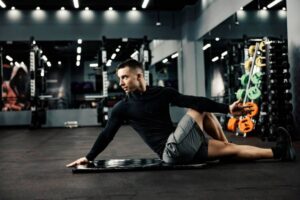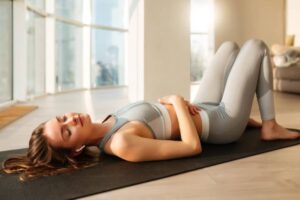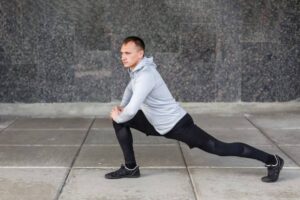The Fitness Blog
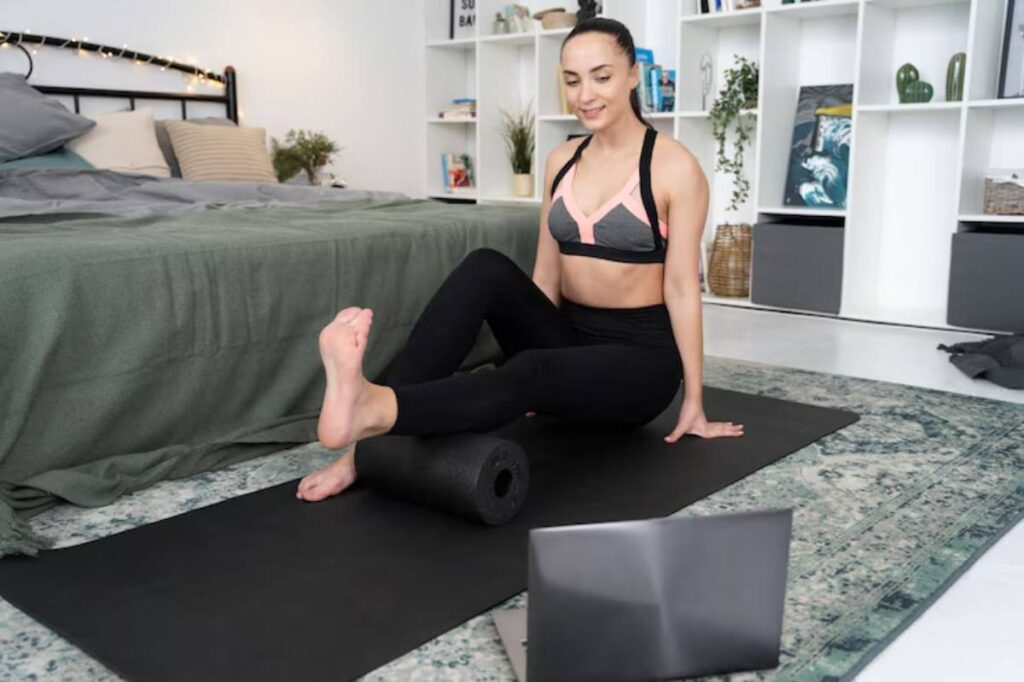
How to Combine Foam Rolling and Stretching for Better Mobility
You finish a workout, lie down with a stretch, and still feel that nagging tightness the next morning. Sound familiar? If you’ve been stretching regularly but not seeing much mobility enhancement, there might be a missing link in your routine: foam rolling before stretching.
Incorporating foam rolling into your flexibility work can be a game-changer. This powerful pairing forms the foundation of an effective self-recovery flow, helping you improve mobility, reduce stiffness, and unlock your body’s natural range of motion.
In this guide, we’ll explain exactly how foam rolling and stretching complement each other, the science behind the method, and how to build your own daily mobility flow to feel better and move smarter every day.
Understanding the Role of Foam Rolling and Stretching
Before we dive into how to combine them, it’s important to understand how they work individually.
What is foam rolling?
Foam rolling is a form of self-myofascial release. You use your body weight on a foam roller to apply pressure to soft tissue muscles and fascia to:
- Release tension and trigger points
- Increase blood flow
- Decrease muscle soreness
- Improve tissue quality before or after workouts
What is stretching?
Stretching, whether static or dynamic, aims to:
- Improve muscle length and flexibility
- Increase joint range of motion
- Reduce injury risk
- Enhance recovery when done post-exercise
Both are useful on their own. But when combined correctly, they become a powerful mobility protocol that improves both short-term flexibility and long-term tissue health.
Quick Guide: Building a Foam Rolling + Stretching Flow
- Start with foam rolling the major muscle groups you’ll stretch
- Roll for 30–60 seconds per area to reduce tension
- Follow immediately with static or dynamic stretches
- Breathe deeply through both phases to calm the nervous system
- Repeat 3–5x per week for noticeable improvements
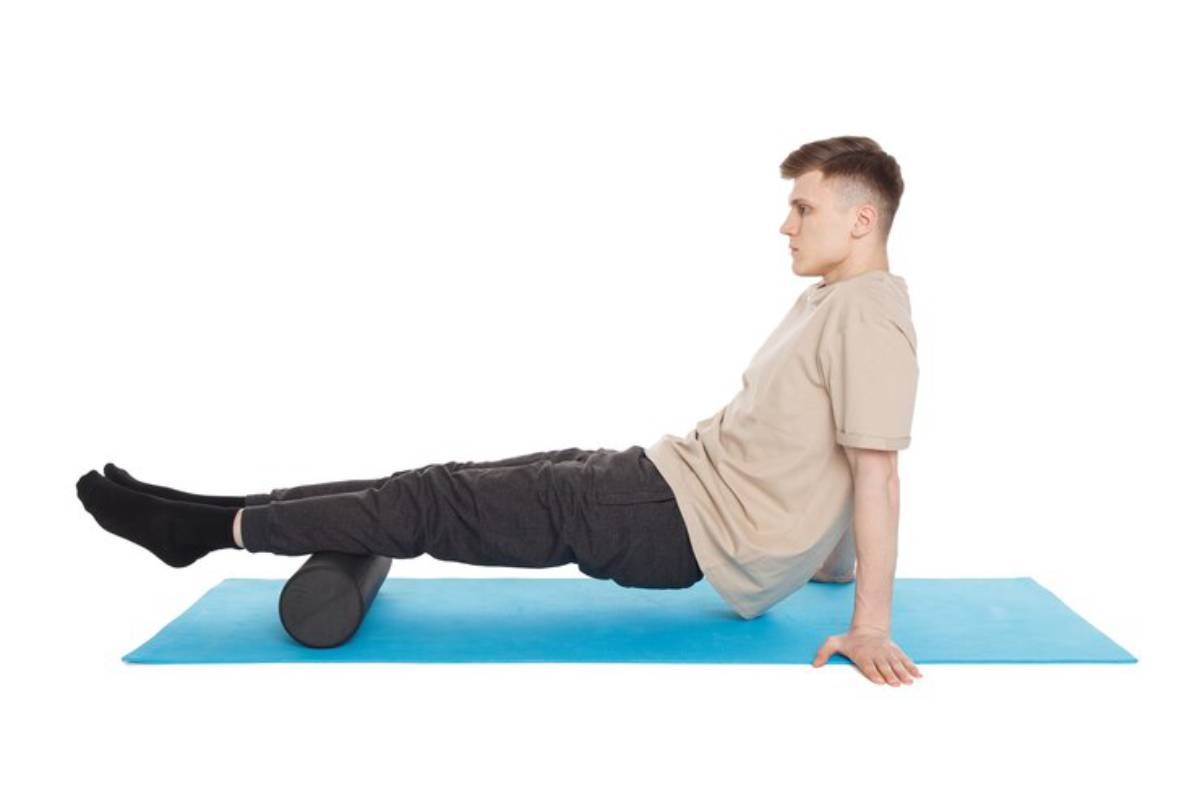
Why Foam Rolling Before Stretching Works
Foam rolling helps reduce myofascial tightness — the web of tissue surrounding your muscles. When this tissue becomes stiff, it limits how far your muscles can stretch.
By rolling first, you:
- Break up adhesions
- Reduce neurological “resistance” to movement
- Create a more pliable environment for the stretch
This means when you stretch afterwards, your muscles are more responsive. The stretch feels deeper, and you’re less likely to feel that “brick wall” resistance that often limits progress.
A study published in the Journal of Strength and Conditioning Research found that foam rolling before static stretching produced greater flexibility gains than stretching alone.
Step-by-Step Guide: How to Practise a Self-Recovery Flow
Ready to put it into action? Here’s a simple but effective sequence.
1. Choose your focus areas
Start with common tight spots:
- Quads (especially for runners and lifters)
- Calves
- Glutes
- Hamstrings
- Upper back and shoulders
Target 2–3 of these per session for best results.
2. Foam roll each muscle group for 30–60 seconds
Use slow, controlled movements:
- Pause on tight or tender spots for 10–20 seconds
- Breathe steadily
- Avoid rushing or bouncing
Pro Tip: For hard-to-reach areas (like the traps or calves), use a massage ball for more precision.
3. Stretch immediately after rolling
Use a mix of static and dynamic stretches:
- Static: Hold a stretch for 20–30 seconds
- Dynamic: Move slowly in and out of the stretch (e.g., walking lunges, arm swings)
Example pairings:
- Roll calves → Downward Dog stretch
- Roll quads → Standing quad stretch
- Roll lats → Child’s pose with side bend
Important: Don’t skip this step. Rolling reduces resistance, but stretching helps “set” the new range of motion.
Combine this flow with self-myofascial release techniques to target persistent tight spots effectively.
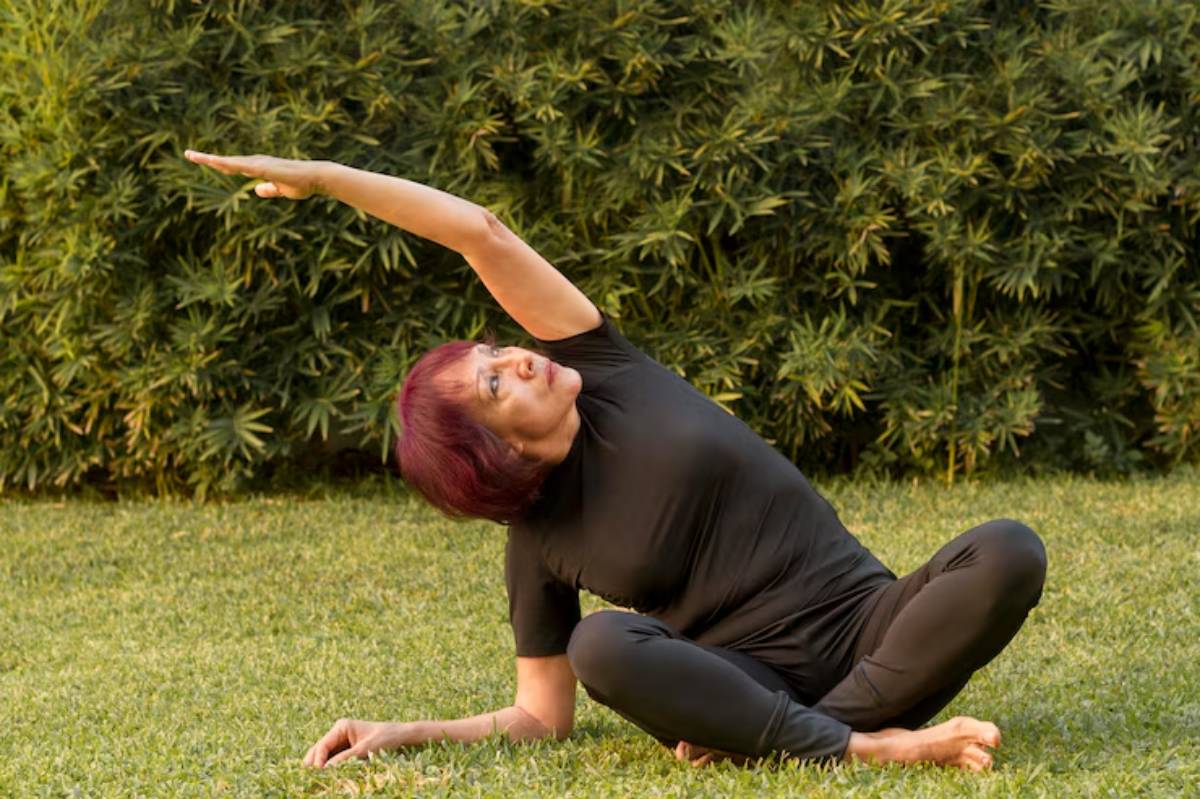
4. Breathe and relax into each stretch
Stretching isn’t just physical — it’s neurological.
Controlled breathing tells your body it’s safe to relax:
- Inhale through the nose for 4 seconds
- Exhale slowly for 6–8 seconds
This parasympathetic activation enhances muscle relaxation.
5. Repeat consistently (at least 3x per week)
Just like strength or cardio, mobility needs frequency to improve. Foam rolling’s effects are temporary; daily practice builds long-term change.
Important: Avoid foam rolling directly on joints, bones, or areas of acute injury or inflammation.
Warning: Don’t force a stretch. Discomfort is okay, but sharp pain is not. Stretching should feel like tension, not strain.
Pro Tip: Combine mobility work with active recovery strategies to maximise your progress between tough training sessions.
Best Practices for Long-Term Mobility Enhancement
Pair with strength training
It’s not enough to stretch into a new range — you have to stabilise it. Use bodyweight or light-resistance exercises that move through the full range, such as:
- Deep goblet squats
- Overhead wall slides
- Slow step-ups
- Banded pull-aparts
Listen to your body
Some days you’ll feel stiff, others more mobile. Adjust the intensity and duration of your foam rolling and stretching accordingly.
Scenario: Had a long day at your desk, and your hips feel locked? Spend more time on glutes and hip flexors. Just back from a run? Calves and hamstrings take priority.
Turn it into a habit
Make your self-recovery flow part of your routine:
- Morning movement sessions
- Evening wind-down
- Post-workout cooldown
To increase consistency, combine it with another habit—like stretching while watching TV or foam rolling during your podcast.
FAQs
Should I foam roll before or after stretching?
First, foam roll. It helps reduce muscular tension and makes stretching more effective by increasing the range of motion.
How long should I spend on mobility work per session?
10–20 minutes is ideal. Focus on a few key areas rather than trying to do everything at once.
Can I use foam rolling instead of stretching?
No — they serve different purposes. Foam rolling preps the muscle tissue; stretching lengthens it and improves flexibility.
Is it better to stretch before or after a workout?
Dynamic stretches are best before. Static stretches work better after or in your dedicated mobility sessions.
What tools work best for self-recovery flows?
A medium-density foam roller, resistance bands, a yoga mat, and a massage ball are versatile and beginner-friendly tools.
Build a Self-Recovery Flow You’ll Actually Stick To
Combining foam rolling before stretching isn’t just about flexibility — it’s about giving your body the attention it deserves.
By layering these tools into a practical, consistent self-recovery flow, you reduce stiffness, improve performance, and move more freely through life. Whether you’re chasing strength goals, managing an old injury, or just want to feel better getting out of bed in the morning, mobility enhancement starts here.
Take a few minutes today. Roll it out. Stretch it out. Then breathe deeply and notice how much better your body feels when you move with intention.
Your mobility is worth the effort, and your future self will thank you for it.



